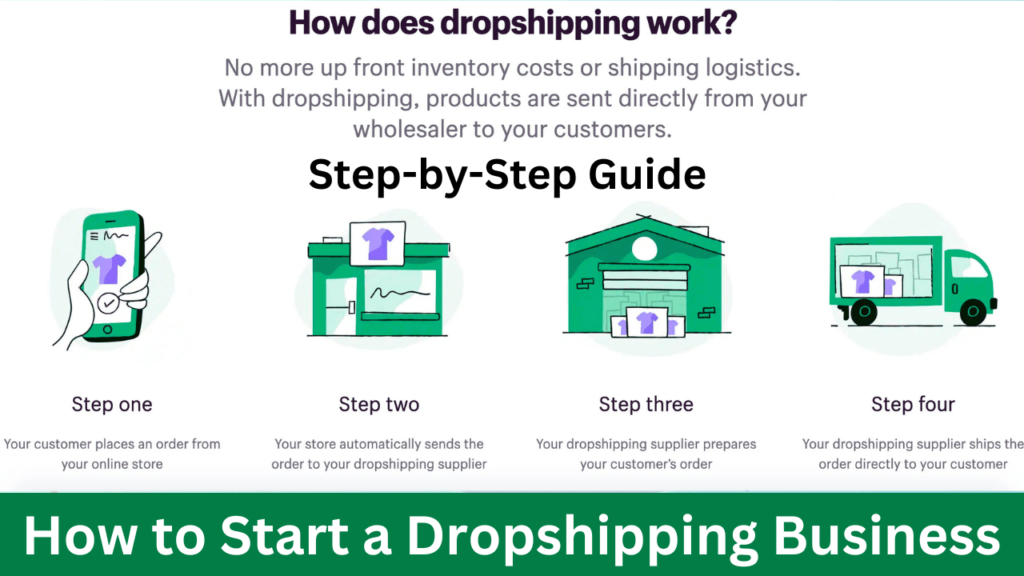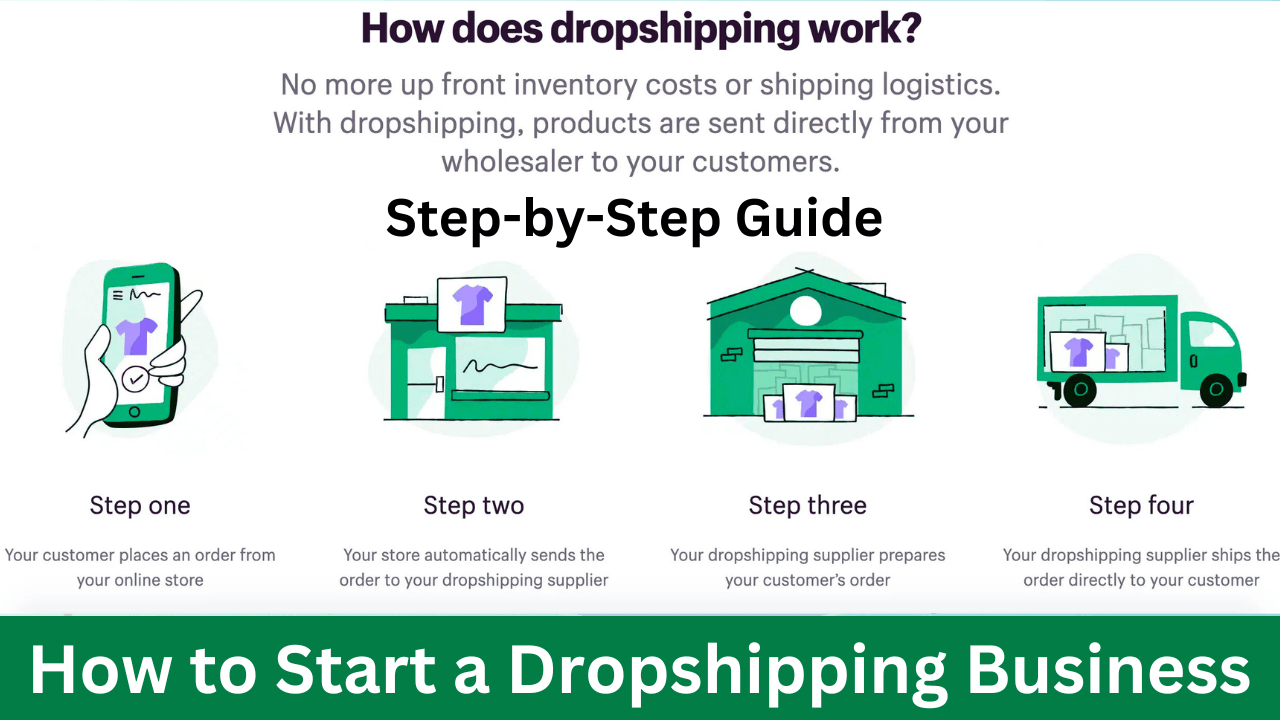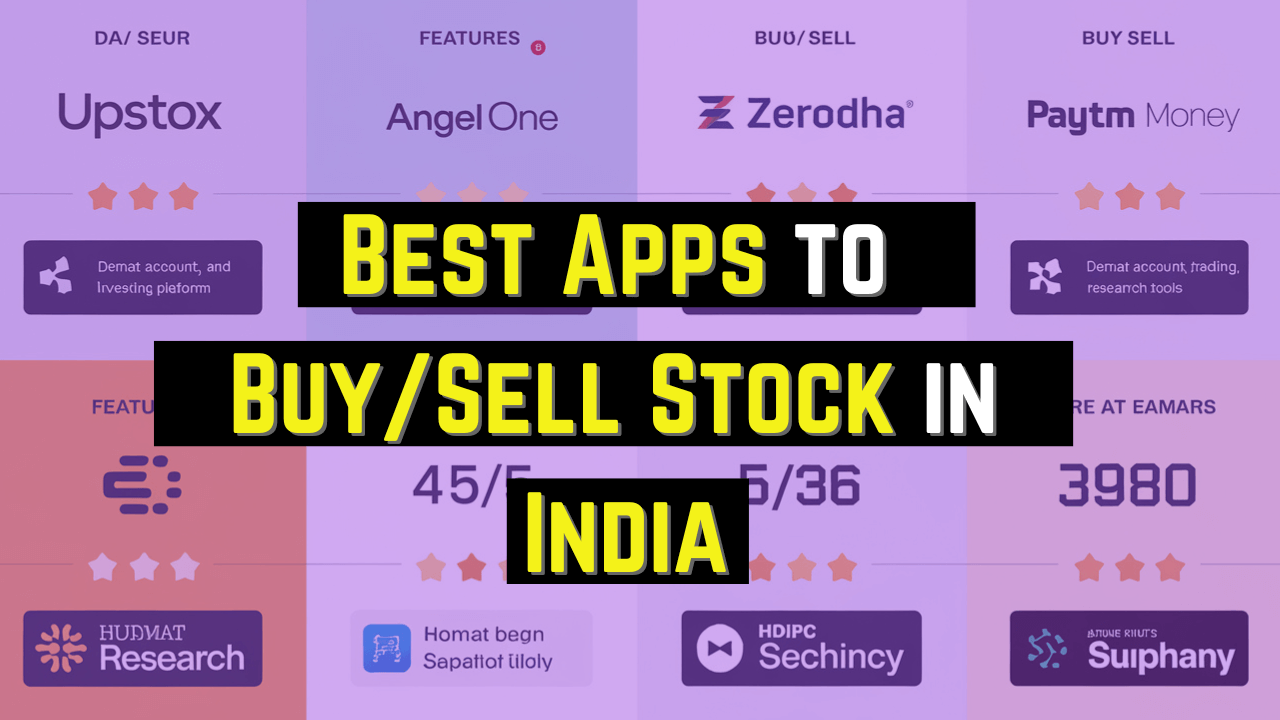One of the good ways to begin an online business with little money is by dropshipping. You don’t have to stock and manage any inventory like a traditional retail model. When a customer makes an order, you will buy the product from a third-party supplier who can ship directly to the customer. This model can help you get started with minimal upfront costs.
But how do you start a dropshipping business, especially in 2025, with such competition all around? And that is why, in this guide, we are going to take you step-by-step process on how to launch your own dropshipping business.
What is Dropshipping?
Before we jump into the how-to’s, let’s quickly discuss what dropshipping is.
A form of retail fulfillment, like dropshipping, doesn’t hold its stock for sale. Rather, a store orders an item from a third party – and that third party ships it directly to the customer. The result: The seller doesn’t ever touch the product, nor does it need to handle inventory.
Key Benefits of Dropshipping:
- Low startup costs: No need to invest in inventory upfront.
- Flexible location: You can run your business from anywhere with an internet connection.
- Wide product selection: You can offer a wide range of products without worrying about inventory storage.
Now that you know what is dropshipping, it’s high time we got into the nitty-gritty details of how to start your business in drop shipping.

Step 1: Choose Your Niche
A niche, simply put, is a specific category of products you want to sell. Instead of trying to sell everything, focus on just one particular type. For instance, you can sell sports equipment, pet supplies, or beauty products.
Tips for Choosing a Profitable Niche:
- Passion and Interest: Choose a niche where you have a passion. It is impossible to begin, run, and sustain a dropshipping business without committing a lot of time and energy. You will find it much easier if you are passionate about the products that you sell.
- Research Market Demand: Use tools like Google Trends, keyword research, and social media to determine product demand in your niche.
- Consider Profit Margins: Products like electronics are low in margins. Choose products that give you adequate profit margins for your business to be sustainable.
- Low Competition: Identify niches with high demand but low competition. To check the level of competition about specific keywords, use tools like Ubersuggest or Ahrefs.
Examples of Profitable Niches in 2025:
- Eco-friendly products (sustainable, reusable items)
- Home fitness equipment and accessories
- Pet products and accessories
- Smart home gadgets
- Health and wellness products
Step 2: Perform Market Research
Once you’ve chosen a niche, it’s time to validate it by doing thorough market research. You want to ensure that people are interested in your products and willing to buy them.
How to Conduct Market Research:
- Check Competitors: Look at other dropshipping stores in your niche to see what products they are selling and how they are marketing them.
- Analyze Demand: Use tools like Google Keyword Planner, SEMrush, or Jungle Scout to see how often people search for products in your niche.
- Customer Feedback: Visit forums, Facebook groups, or Reddit communities where your target audience hangs out. Learn about their pain points and preferences to better serve them with your product selection.
Step 3: Find a Reliable Dropshipping Supplier
Once you decide upon your niche, then comes the supplier. A supplier is that company that manufactures or keeps those products you would like to sell. They send the products directly to your customers when the latter order such products.
Your supplier forms the backbone of your dropshipping business. An excellent supplier avows you to order and grants you products of superior quality that arrive on schedule and in excellent condition at the end.
Where to Find Dropshipping Suppliers:
- AliExpress: Popular for beginners, AliExpress has a massive selection of products that can be shipped worldwide.
- SaleHoo: SaleHoo offers a directory of verified suppliers and allows you to choose from a range of products.
- Oberlo: Oberlo is a dropshipping app designed for Shopify users. It helps you find and import products from suppliers into your Shopify store.
- Wholesale2B: A platform that connects you with dropshipping suppliers in multiple product categories.
- Spocket: Focuses on suppliers from the US and EU, ensuring faster shipping times for customers in these regions.
What to Look for in a Supplier:
- Product quality: Order samples to ensure the products meet your standards.
- Shipping times: Make sure the supplier offers reasonable shipping times for your target market.
- Reliability: Check online reviews and forums to ensure the supplier is trustworthy and delivers products on time.
- Communication: Choose a supplier that communicates clearly and is easy to work with, especially when dealing with customer issues or returns.
When choosing a supplier, make sure they are trustworthy and offer good products. You should also check how long it takes for them to ship products to customers.
Step 4: Create Your Online Store
Now that you have your niche and your supplier, it is time to create your online store. With the amount of platforms currently available, building an eCommerce store is quite straightforward even if you know nothing about the technical aspects.
Best Platforms for Dropshipping:
- Shopify: Shopify is perhaps one of the easiest platforms to use nowadays for dropshipping, with an entire arsenal of apps, such as Oberlo, that can help you automate your dropshipping process.
- WooCommerce:If you already have a WordPress website, WooCommerce is an extremely powerful eCommerce plugin that will enable the use of dropshipping functionality on your site.
- BigCommerce: BigCommerce is another amazing choice for building a dropshipping store. It has thousands of available themes and built-in functionalities so that you do not miss anything in creating a successful store.
- Wix: Wix is another amazing website builder that is relatively inexpensive and also allows eCommerce and dropshipping functionality.
Designing Your Store:
- Choose a clean, user-friendly theme: Ensure your store is easy to navigate and visually appealing.
- Mobile optimization: Your store has to be totally responsive. Most of the customers are shopping on the move, so your store must look great and work well on mobile.
- Add essential pages: Your store must contain pages such as About Us, Contact, Shipping Policy, and Return Policy, to deepen trust with your potential customers.
These platforms offer templates that help you design your store. You just have to add your products, write descriptions, and set prices.
Step 5: Add Products to Your Store
Once your store is set up, add the products you want to sell. You’ll need to write good product descriptions that explain what the product is and why people should buy it.
Tips for Creating High-Converting Product Pages:
- High-quality images: Use clear, professional photos to showcase your products.
- Detailed descriptions: Write compelling product descriptions that highlight the benefits and features of each item.
- SEO optimization: Optimize your product titles and descriptions with relevant keywords to help your products rank higher in search results.
- Customer reviews: If possible, add reviews or testimonials to build trust and encourage purchases.
Step 6: Set Up Payment Methods
To make sales, you will need to allow different payment options in your store. Generally, most eCommerce site platforms have allowed several types of payment gateways. The transaction process should be simple and safe for your customers.
Popular Payment Gateways:
- PayPal: One of the most trusted payment methods worldwide, PayPal is easy to integrate with most eCommerce platforms.
- Stripe: A popular option for credit card payments, Stripe is easy to set up and widely used by online businesses.
- Shopify Payments: If you’re using Shopify, their built-in payment system is a convenient option that integrates seamlessly with your store.
Step 7: Market Your Store
After your store is ready, it’s time to let people know about it. Marketing helps you bring traffic (visitors) to your store and encourages them to buy your products.
Effective Marketing Strategies:
- Social Media Marketing: Create profiles on platforms like Instagram, Facebook, and TikTok to showcase your products and engage with your target audience.
- Influencer Marketing: Partner with influencers in your niche to promote your products to their followers.
- Content Marketing: Start a blog on your store and write posts about topics related to your niche to attract organic traffic from search engines.
- Email Marketing: Build an email list and send out regular newsletters with special offers, new product updates, and promotions.
- Paid Advertising: Use Facebook Ads or Google Ads to reach a targeted audience and drive traffic to your store.
Step 8: Manage Orders and Customer Service
Once you start getting orders, it’s important to manage them well. Your supplier will ship the products to the customer, but you need to make sure everything runs smoothly. If a customer has a question or problem, you’ll need to handle customer service and keep them happy.
Order Fulfillment Tips:
- Automate order processing: Use tools like Oberlo or Spocket to automatically process orders with your suppliers.
- Keep customers updated: Send automated email notifications when their orders are shipped or delayed.
- Handle returns promptly: Work with your supplier to manage returns and refunds in a timely manner to maintain customer satisfaction.
Step 9: Keep Improving
Running a dropshipping business is an ongoing process. You should always look for ways to improve your store, products, and marketing. Keep an eye on what your competitors are doing and listen to customer feedback.
Conclusion
Starting a dropshipping business is a great way to enter the world of eCommerce with low risk.
However, following this step-by-step guide can get you started on building a successful online store and finding reliable suppliers with which to make sales. Do not forget that the general concept includes choosing the right niche, marketing your store effectively, and delivering good customer service.
With dedication and consistent effort, your dropshipping business can grow and become a profitable business.
FAQs: Dropshipping Business
Does a drop shipping business require a large amount of investment?
No, the initial investment required for a dropshipping business is very low. Since you do not have to purchase any inventory ahead of time, you only incur a cost when a customer places an order for the product.
How do I choose the right products to sell in my dropshipping store?
Find a niche, find products in high demand and low competition using tools like Google Trends and keyword research.
Can I start dropshipping with no experience?
Absolutely! Dropshipping is an easy business model, and even those who do not know technical stuff can readily set up a store using platforms such as Shopify and WooCommerce.
How much time does it take to run a dropshipping business?
However, even with less time being invested in the daily operation, marketing, customer service, and order management are necessary to take your business further.
How can I find reliable suppliers for my dropshipping business?
Use AliExpress, Oberlo, or Spocket when finding sources, and afterward, take time to read reviews from these platforms or websites, and make sample orders to check quality.










